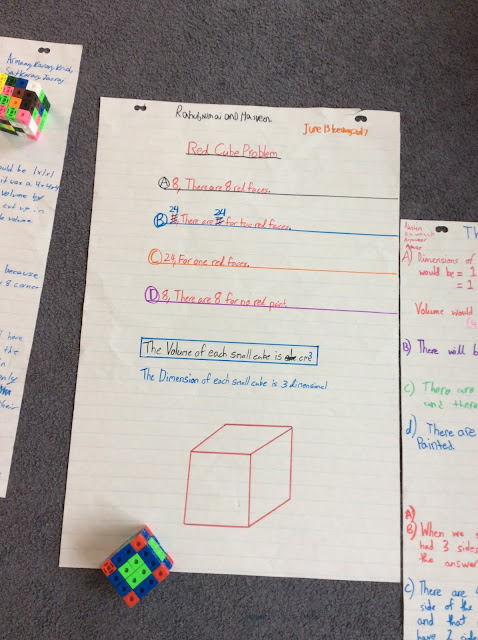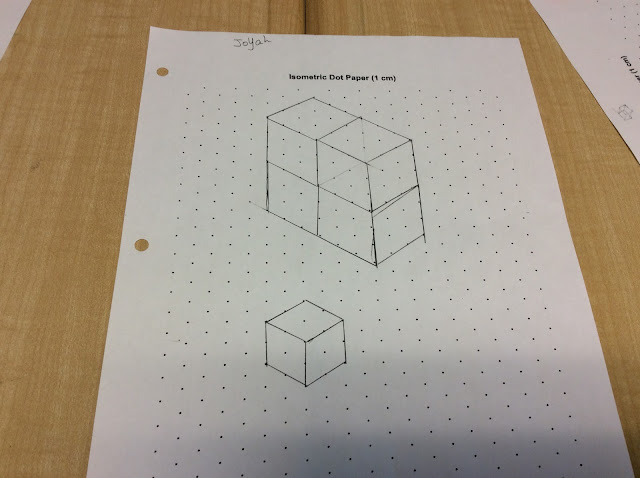Some of my kiddies figured out
Euler's Formula on their own! Way to go smartians!
For any polyhedron that doesn't intersect itself, the number of faces, plus the number of vertices (corner points), minus the number of edges always equal to 2.
F + V - E = 2
They also made other interesting observations. In order to calculate the number of faces, edges and vertices of
prisms they noticed:
Number of sides + 2 (will figure out the number of faces)
Number of sides x 3 (number of edges)
Number of sides x 2 ( number of vertices)
For Pyramids:
Number of sides on base + 1 (tells the number of faces)
Number of sides on base x 2 (number of edges)
Number of vertices and number of faces are the same.
Excellent observations kiddies!





















































